 Once upon a time in Jodhpur, Rajasthan, there used to be this vast land, forsaken by one and all. The highly saline wasteland had been rendered useless, infertile and barren.
Once upon a time in Jodhpur, Rajasthan, there used to be this vast land, forsaken by one and all. The highly saline wasteland had been rendered useless, infertile and barren.
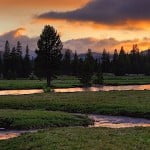
There was a reason why this 95 acres of plot had the distinction of being ‘the worst land in Rajasthan’. Nothing could be grown, nothing could be constructed and there was no water available on this land. That was in 2005. And then, suddenly it seemed that God showered his blessings like rainfall on this thirsty land.
Eight years later, in 2013, a different entity stands at the same spot, at Village Kaparda, Tehsil Bilara, District Jodhpur in Rajasthan. A bright, cheerful campus site greets you today. The land has transformed in colour, appearance and spirit altogether. It has become a greenbelt consisting of over 6000 plants and trees which have grown up to 12 feet. With a total of 15 lakes, made through rain water harvesting, it has a capacity to store around 6 crore litres of water with fishes, frogs and even tortoises in these. It has two large bridges constituting the rain water harvesting structures. This apart, the campus has three large size lawns of 2.5 acres each, with solar lights on the periphery of each and 60 benches made of fibre glass.

The campus that belongs to the Aravali Institute of Management is spread across 28,000 sq. feet of built up space housing the library, computer centre, classrooms, offices, guestrooms with attached bath rooms, electricity room, guard room and stores. There’s also a natural meditation centre, with a capacity to seat around 2000 persons, surrounded by 1500 plants. Today, the site not only invites several thousand students and guests, but also winged visitors in the form of migratory birds visiting the beautiful lakes.
The person behind this miracle, Varun Arya is a proud man as he recalls how this makeover was brought about, with the trials and tribulations that he faced in the process. However, the change didn’t happen overnight. The start to this difficult journey, for this IIT Delhi and IIM Ahmedabad alumnus, was marred with pessimism from all quarters. He says,
When I left a high paying senior position with the American multinational DuPont 12 years back, people called me a fool. When I chose Jodhpur in Rajasthan as a location for establishing the top-quality educational complex, people called me a big fool. And when I purchased the above wasteland, people called me a bloody fool!
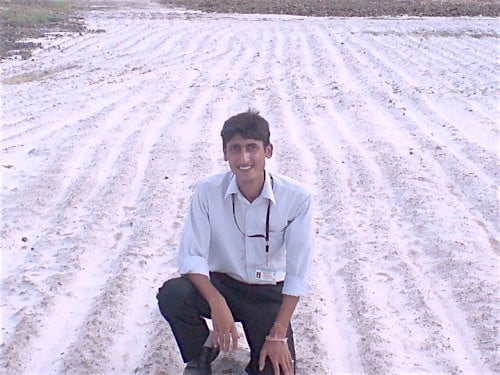
Salt, salt everywhere!
The land where the Aravali Institute of Management stands today was geologically given the thumbs down by experts, recalls Mr Arya. According to ISRO, the campus land was an extreme wasteland and the development of the same for academic purpose was going to cost enormous effort and money. As per the Central Arid Zone Research Institute (Jodhpur), Ministry of Agriculture, the plot lay in a wasteland with high inherent salinity. The salinity also made building construction risky because of corrosion. The Arid Forest Research Institute also came up up with some unfavourable data classifying the sand texture as loamy and the soil depth as 25 to 40 cm (rock beneath).
The fifth lake that was constructed on the site: Water now so pure, so sublime. There are now 15 lakes there, all filled to the brim!
Yet, he went ahead with this land. He reasons,
We really had no choice but to purchase this land since no one else was willing to give us the land with entire payment by cheque. When we got into this educational entrepreneurial venture 14 years back, we had told ourselves that education, by definition, was based on ethics. No compromise under any circumstances irrespective of the difficulties, hardships, sacrifices and struggles.
Tackling the problems one at a time
While everyone was busy, pointing out the problems, Varun was focused on finding and implementing the solutions. In Varun’s words,
This painstaking transformation from wasteland to wonderland has meant a lot of learning from the first principles, many intuitive experiments which fortunately succeeded, enormous efforts with patience and perseverance and investing reasonably large finances.
The following were the problems faced and tackled:
The execution of transformation plans began in right earnest : Water harvesting structures being erected.
English Babool: The purchased land was infested with English Babool, a plant that hindered the growth of other plants and made the land infertile. They had Magsaysay awardee waterman, Mr Rajendra Singh, called in to identify and repair the damage. Following this, they got a JCB machine to remove around 1500 English Babool from the site after several days of hard work.
Land earmarking: It wasn’t easy to construct cemented walls to mark the boundary of the land. The board declaring ownership would be destroyed by local protestors, engaging in reckless vandalism. Also, for the value conscious Varun Arya, paying sizeable cash amounts was never an option to get rid of this problem. Instead, on the advice of an elderly villager, they resorted to speaking to Darbar, ie Maharaja Gaj Singh of Marwah-Jodhpur, who sympathized with the situation. He amicably and peacefully settled matters with the local people, ensuring their co-operation in the project in future. Today, Maharaja Gaj Singh is not only a well-wisher of the project but also the Chairman of the Institute’s Board of Governors. The campus site is currently demarcated by a 3 kms long boundary wall.
The formation of lakes taking place under the guidance of Magsaysay awardee ‘waterman’ Mr. Rajendra Singh.
Water harvesting: Cultivating the flora and fauna of the area was a task that required water. The team had dug up areas in the land for 6 lakes, each up to 10 ft deep, for rainwater harvesting on the advice of Mr Rajendra Singh. This was indeed a testing period. Remembers Mr. Arya:
We had to extensively use blasting since at most places there were rocks beneath. People laughed at seeing the dug up areas, questioning where so much of water would come from in the scanty rains of Rajasthan.
To their happiness, the 6 dug up lake pits got filled with 2.5 crore litres of water in a matter of an hour, with the heavy rains in July 2006. In fact, the water started to overflow with more than a month of incessant rain. But the excitement was short lived as within 3 months, the water had become saline. Saline water was of no use for either construction purpose or for growing plants. They had avoided lining the pits as it was a cost-intensive, non-environment friendly and temporary way of preventing salinity, besides blocking the underground seepage of water. So they relied on Nature to filter out salinity, and they waited for six long years. The salinity gradually decreased with every passing year, till in the sixth year, the water remained sweet throughout the year! Sweet are the fruits of patience and hard work! Encouraged by this success, the team went on to make more lakes on the land and the nearby areas.
Bridges: Another significant problem on this plot was that there was no proper inlet and outlet for excessive rainwater. The resultant (almost shoulder level) water passage would also make commuting an issue within the land premises. To sort this out, two bridges were constructed on both sides of the boundary in the line of this water passage. Today, these large bridges not only constitute the rainwater harvesting structures, but also enhance the beauty of the campus.
Plantations: Even thinking about plantations in a barren, highly degraded, saline land required courage. With the support of some experts however, this dream became a reality. With the advise and help of Dr. R. L. Srivastava, Indian Forest Service officer of 1978 Batch who was Director of Arid Forest Research Institute (AFRI) at Jodhpur, Mr. Narayan Dass Prajapati, Managing Trustee of Asian Medical Plants & Healthcare Trust at Jodhpur and Mr. Jagdish Kishwan, IFS, Director General, Indian Council of Forestry Research & Education of Ministry of Environment & Forests in the Government of India who advised AFRI to make the plot their experimental site, the team planted around 25 varieties of plants, some salt resistant and some normal ones. The major plants were Khara Jal, Karanj, Kasod, Neem, Peepal and Kumat. Mr Arya explains:
For all the plants, we first dug up a 1m x 1m x 1m pit in the rocky land using JCB. Then we got sweet soil from quite a distance and filled each pit with it after mixing it with traditional fertilizer made of cow dung and goat bits. Then the plant was placed surrounded by the tree guard. The tree guard helped us to place jute cloth around the plant in extreme summer to protect it. We also planted low roots, high foliage plants like castor and sunflower around each plant to protect these from the extreme heat in the summer. At those locations in our land where the salinity was the highest, we first placed a large multilayer jumbo bag and then put the sweet soil inside the said jumbo bag. This multilayer jumbo bag helped greatly in insulating the plant from the seepage of salinity and thus safeguarding its longevity.
Today, the site boasts of 6000 plants, growing up to 12 feet.
Maharaja Gaj Singh-II of Marwar-Jodhpur guiding on the water harvesting structures. He is also the Chairman of Jal Bhagirathi Foundation, set up by him jointly with Magsaysay awardee waterman Mr. Rajendra Singh.
Lawns: In spite of saline land, the team was able to make lawns, initially of around 25 feet by 25 feet in less saline areas. Then they made lawns of similar dimensions in more saline areas as well by demarcating the peripheries of the lawn area with pebbles to raise the level of the lawn and placing sweet soil there. They made 5 such lawns. Gradually, they increased the lawn dimensions for 2 more lawns to 100 m by 100 m each. They installed the sprinkler system to water these lawns, planted Neem trees and also placed solar lights around the lawns. Today these lawns are a key attraction for students (for various activities and sports too) and visitors alike.
First experimental lawn successfully developed, flanked by trees that were planted and nicely grown on the wasteland.
Salinity: When the land was purchased in 2005, it was thickly coated with salt. The problem was primarily combated with natural means that included rainwater harvesting, salt-resistant and salt-absorbent trees and plants and dhencha, a highly nitrogenous plant that greatly reduced salinity.
Construction: Salt blends with lime construction easily, but eats into cement construction, but construction with mudia lime (not easily available either) was 5 times costlier than construction with cement. So the team planned to use lime for construction only till the plinth level, where salinity came into contact. Above plinth level, cement was used for construction. The strength of construction with lime is the least initially but it increases over the passage of time. The strong 550 year old Meherangarh Fort in Jodhpur made with conventional lime is a prime example of this. On the other hand, the strength of construction made with cement is highest initially but it reduces over the period of time. Mr Arya reminisces:
Historically in Rajasthan, the mudia lime was processed using camels. Since we did not have camels, we again did our reasearch. We found a person in Didwana near Nagaur who used to make the machines for processing the mudia lime. We got two such machines custom-made from him. These were made operational using the tractor motor and it really worked.
The success of this experiment was proven to one and all when 3 years later, heavy rains in the region damaged the nearby Pichyak dam and other buildings, creating havoc in the surrounding villages and even came up to their site but could cause no harm thanks to the constructed 3 km long boundary wall.
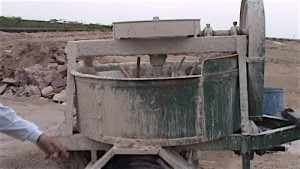
Vegetation: With all the work carried out in the area so far, they have successfully been able to grow a wide variety of vegetables including aloe vera, cucumber, spinach, ladies finger, tomatoes, brinjals, radishes, carrots, etc. The extra effort put in to be able to grow these vegetables involved bringing sweet soil from outside and mixing it with the conventional fertilizer of cow dung and goat bits. The result was that the quality and taste of the vegetables was better than even their market variants. The quality was even lauded by Dr. Montek Singh Ahluwalia, Deputy Chairman of Planning Commission of India and his wife Dr. Isher Judge Ahluwalia, who visited their site in November, 2008.
Land conversion: Corruption was probably the most difficult obstacle that had to be overcome in setting up the institute. Mr Arya was neither prepared nor willing to compromise on his ethics to secure land meant for as sacred a cause as education. This, in spite of the fact that hurdles loomed large in the form of bribe- and ‘negotiations’-hungry politicians and top-ranking governmental authorities. Illuminating on his plight, Mr Arya says:
I met the highest authorities in the government but none of this helped in any way. Instead, with full force of state, the government unleashed against us several enquiries and false cases including concocted cases even for disturbing peace in the city of Jodhpur, death and molestation. There were attacks on me and my family members to make me surrender to the wishes of the netas and babus. However, I refused to buckle and continued to strive for results while persistently refusing to make any compromise.
It was only after several months of struggle and strife (including a period of fasting at Jantar Mantar, New Delhi) over what rightfully belonged to them and with the extensive support of IITs & IIMs alumni and faculty members, former judges & Chief Justices of High Courts, top officials, academicians, defence officers, social activists, media, lawyers, staff and students of the institute, and also the villagers there, were they finally able to get their due. That is, now they have successfully acquired the conversion approval for the entire 236 bigha of their campus site land.
Today, their quest for educational entrepreneurship as well as various other societal benefits continues. And they pledge to do this without compromising on their morals. The success story of the Aravali Institute of Management strengthens the belief that it is not only possible to transform a barren land into a greenbelt with hard work and determination, but also challenge corruption with the right ethos and positive values.
Photographs: Courtesy Aravali Institute of Management
Disclaimer: We at Prepare for Change (PFC) bring you information that is not offered by the mainstream news, and therefore may seem controversial. The opinions, views, statements, and/or information we present are not necessarily promoted, endorsed, espoused, or agreed to by Prepare for Change, its leadership Council, members, those who work with PFC, or those who read its content. However, they are hopefully provocative. Please use discernment! Use logical thinking, your own intuition and your own connection with Source, Spirit and Natural Laws to help you determine what is true and what is not. By sharing information and seeding dialogue, it is our goal to raise consciousness and awareness of higher truths to free us from enslavement of the matrix in this material realm.
 EN
EN FR
FR

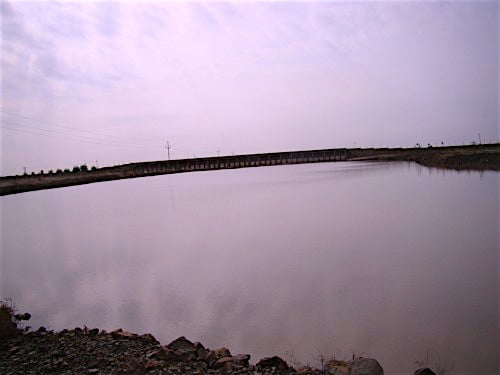
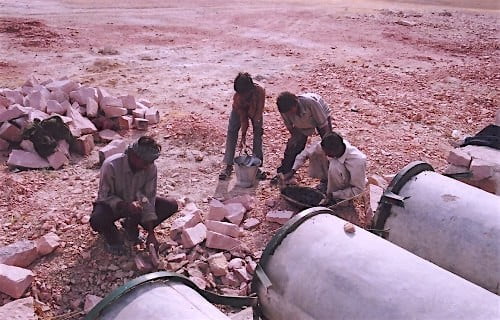
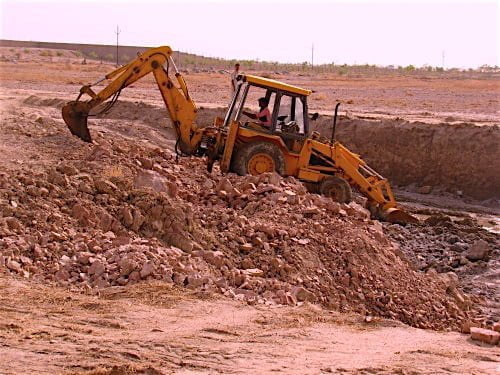
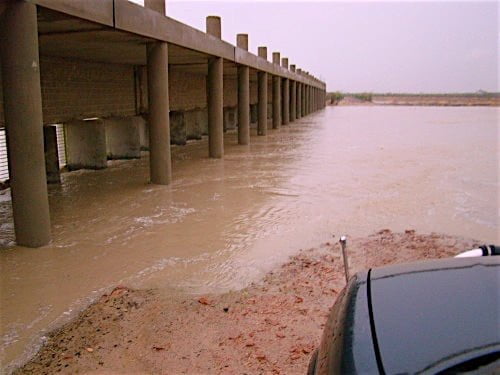
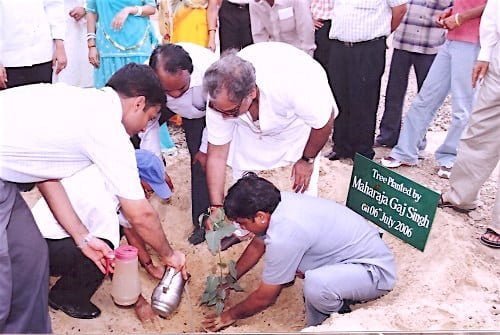
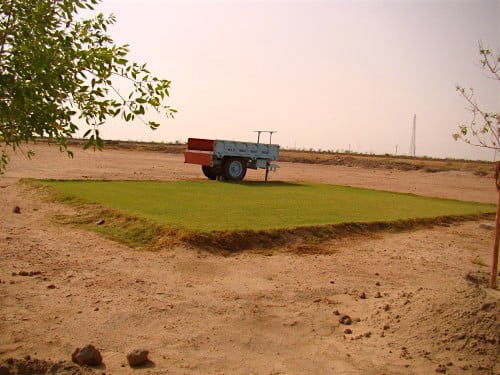
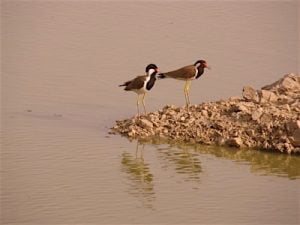
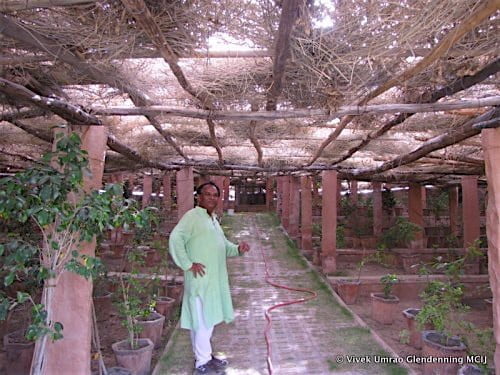
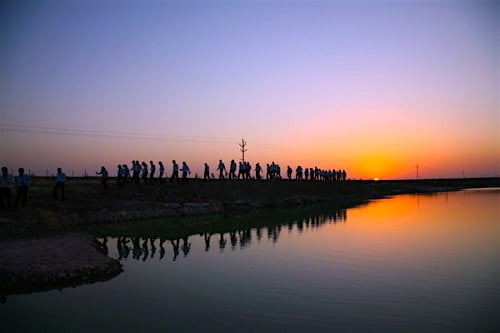

























If given the opportunity, I would like to edit my reply to correct a few grammatical errors ♥ Jilly
Faith and perseverance and an inherent belief in successfully transforming a barren and seemingly hopeless plot of a dried sea bed into a place of beauty and enrichment is that which creates the wonder and miracles of life. This is a perfect example of one man who, against all odds, followed the voice of his Higher Consciousness, which gave him the tenacity, strength and courage to create a wondrous mosaic of natural living beauty from a once barren and lifeless ocean floor, long since left to decay. It is a lesson to each of us to follow our Hearts, to be humble enough to ask for help when necessary and to always keep in mind the needs of the community surrounding any project or endeavor, When acting purposefully and with full respect for the surrounding community. It takes on a life of its own and the community spirit then becomes a very important and inherent part of the creative process to honor a vision so extraordinary even though it was nearly indomitable from the outset. But their unwavering support of this one man’s vision kept them on track in spite of many setbacks. And so, with their immense help came the incredible transformation from an unusable plot of dried up salt sea land to to an Academic Shangri-la with rich grassy plains, diverse trees,and other lovely native plants, a living meditation facility, and so many natural lakes that it is now a refuge for migrating birds. That, in turn, necessitated the building of bridges to carry individuals over the water. To me, this is a true Love Story of one man’s Vision coming into fruition with the help of many, including Mother Nature, to create a thriving ecosystem,which was simply meant to be.
Peace and Love ♥ Jilly
awsome!!!!!!!!!!!!!!!!!!!!!!!!
Beautiful!!!!!!!!!!!!!!!!!!!!!!!!
Victory of the Light!!!